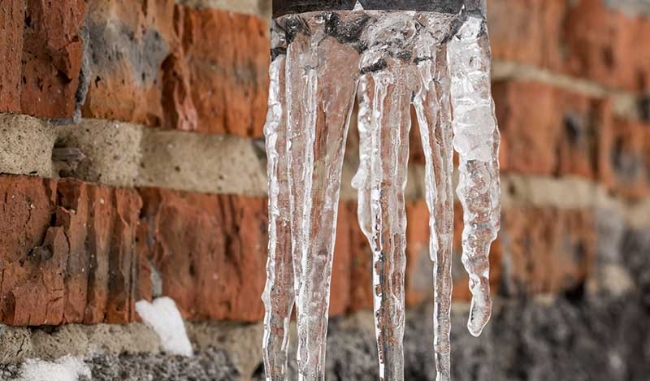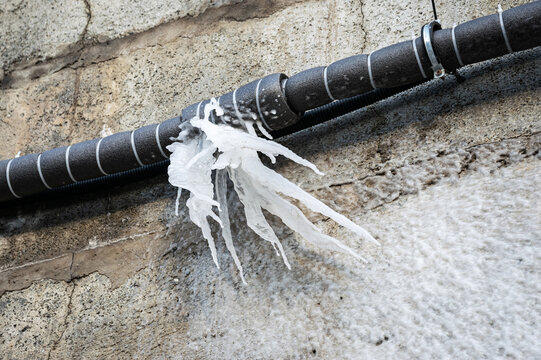Protecting Against Frozen Pipes in Winter: Key Strategies
Protecting Against Frozen Pipes in Winter: Key Strategies
Blog Article
Right here below you can locate a good deal of excellent facts involving Prevent Frozen Pipes .

Cold weather can wreak havoc on your plumbing, especially by freezing pipelines. Below's exactly how to stop it from occurring and what to do if it does.
Intro
As temperature levels decline, the risk of frozen pipes boosts, possibly bring about expensive repair services and water damage. Recognizing how to avoid frozen pipelines is crucial for homeowners in chilly environments.
Recognizing Frozen Pipelines
What triggers pipelines to ice up?
Pipes ice up when exposed to temperatures below 32 ° F (0 ° C) for prolonged periods. As water inside the pipelines freezes, it expands, taxing the pipe wall surfaces and potentially causing them to burst.
Risks and problems
Frozen pipelines can bring about water system disturbances, residential property damage, and expensive repairs. Burst pipes can flood homes and cause comprehensive structural damages.
Indications of Frozen Pipes
Recognizing icy pipes early can stop them from bursting.
Exactly how to determine icy pipelines
Search for reduced water circulation from taps, unusual odors or noises from pipes, and visible frost on exposed pipes.
Avoidance Tips
Protecting prone pipes
Wrap pipes in insulation sleeves or make use of warmth tape to protect them from freezing temperatures. Concentrate on pipelines in unheated or external locations of the home.
Home heating strategies
Maintain interior spaces sufficiently heated, specifically areas with plumbing. Open up cupboard doors to permit warm air to flow around pipelines under sinks.
Protecting Exterior Plumbing
Garden tubes and outdoor taps
Separate and drain garden tubes before wintertime. Install frost-proof faucets or cover outside taps with protected caps.
What to Do If Your Pipes Freeze
Immediate activities to take
If you think icy pipes, keep taps open to alleviate pressure as the ice thaws. Use a hairdryer or towels taken in warm water to thaw pipelines slowly.
Long-Term Solutions
Structural modifications
Think about rerouting pipelines away from exterior walls or unheated areas. Add extra insulation to attics, basements, and crawl spaces.
Upgrading insulation
Purchase top notch insulation for pipelines, attics, and wall surfaces. Appropriate insulation helps keep consistent temperature levels and decreases the risk of frozen pipes.
Final thought
Protecting against icy pipelines calls for aggressive actions and fast responses. By recognizing the reasons, indications, and preventive measures, property owners can protect their pipes during winter.
6 Proven Ways to Prevent Frozen Pipes and Protect Your Home
Disconnect and Drain Garden Hoses
Before winter arrives, start by disconnecting your garden hoses and draining any remaining water. Close the shut-off valves that supply outdoor hose bibs and leave the outdoor faucet open to allow any residual water to drain. For extra protection, consider using faucet covers throughout the colder months. It’s also important to drain water from any sprinkler supply lines following the manufacturer’s directions.
Insulate Exposed Pipes
Insulating your pipes is an effective way to prevent freezing. Pipe insulation is readily available at home improvement stores and is relatively inexpensive. Pay close attention to pipes in unheated areas such as the attic, basement, crawl spaces, or garage. Apply foam insulation generously to create a buffer against the cold. You can also wrap your pipes in heat tape or thermostat-controlled heat cables for added warmth.
Seal Air Leaks
Inspect your home for any cracks or openings that could let in cold air. Seal any holes around the piping in interior or exterior walls, as well as the sill plates where your home rests on its foundation. Additionally, make sure to keep your garage door closed unless you’re entering or exiting. Leaving it open creates a significant air leak that can lead to frozen pipes.
Allow Warm Air Circulation
During cold snaps, it’s essential to allow warm air to circulate evenly throughout your home. Leave interior doors ajar to promote better airflow. Open kitchen and bathroom cabinets to help distribute heat consistently around the rooms. If you have small children or pets, be sure to remove any household chemicals or potentially harmful cleaners from open cabinets for safety.
Let Faucets Drip
A small trickle of water can make a big difference in preventing ice formation inside your pipes. When temperatures drop significantly, start a drip of water from all faucets served by exposed pipes. This continuous flow helps prevent the water from freezing. Additionally, running a few faucets slightly can relieve pressure inside the pipes, reducing the chances of a rupture if the water inside does freeze.
https://choateshvac.com/6-proven-ways-to-prevent-frozen-pipes-and-protect-your-home/

We had been shown that article about Winter Plumbing Precautions: Preventing Frozen Pipes from someone on a different web address. Sharing is caring. Who knows, you will be doing someone a favor. We enjoy your readership.
Source This Article Report this page